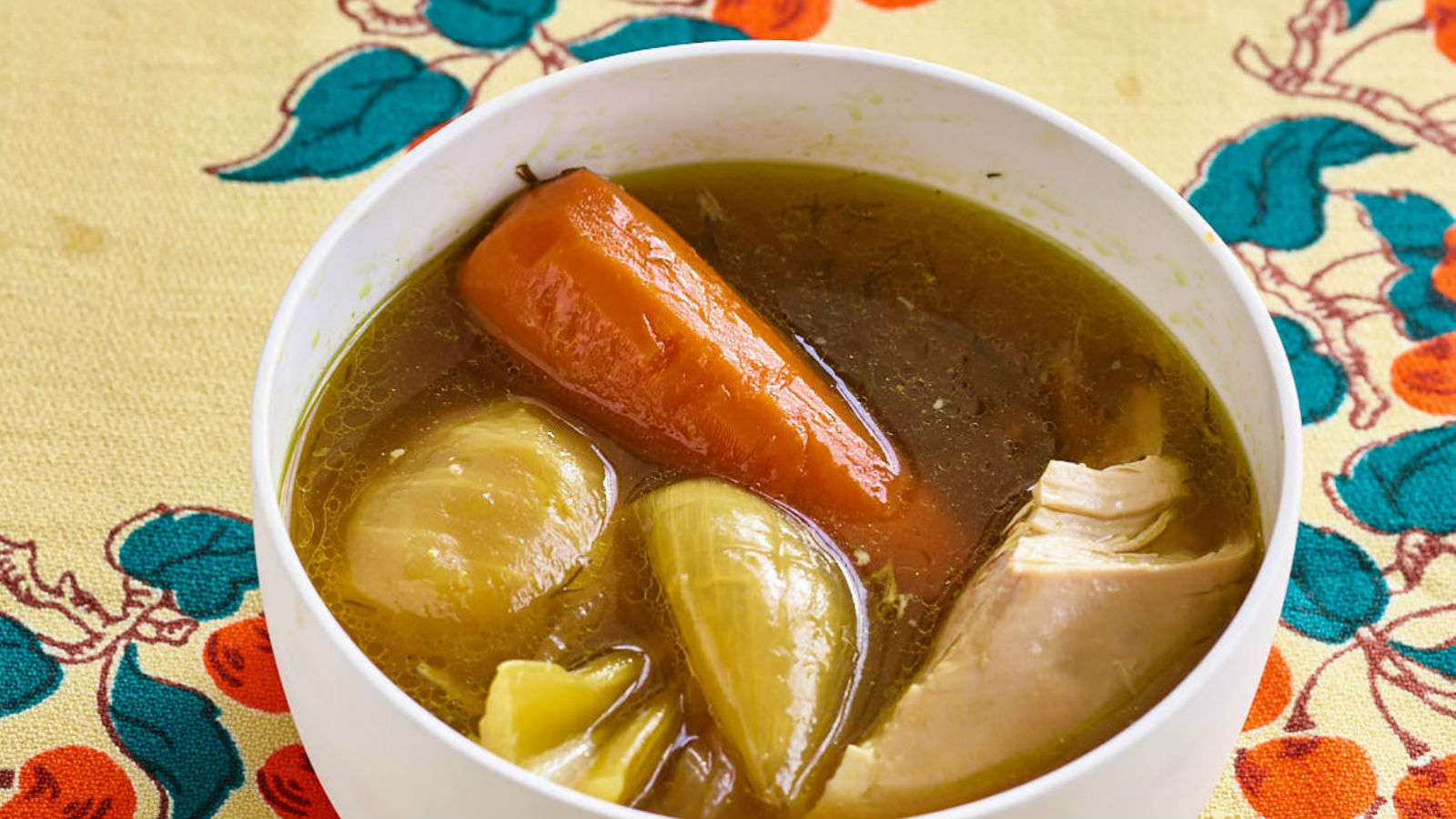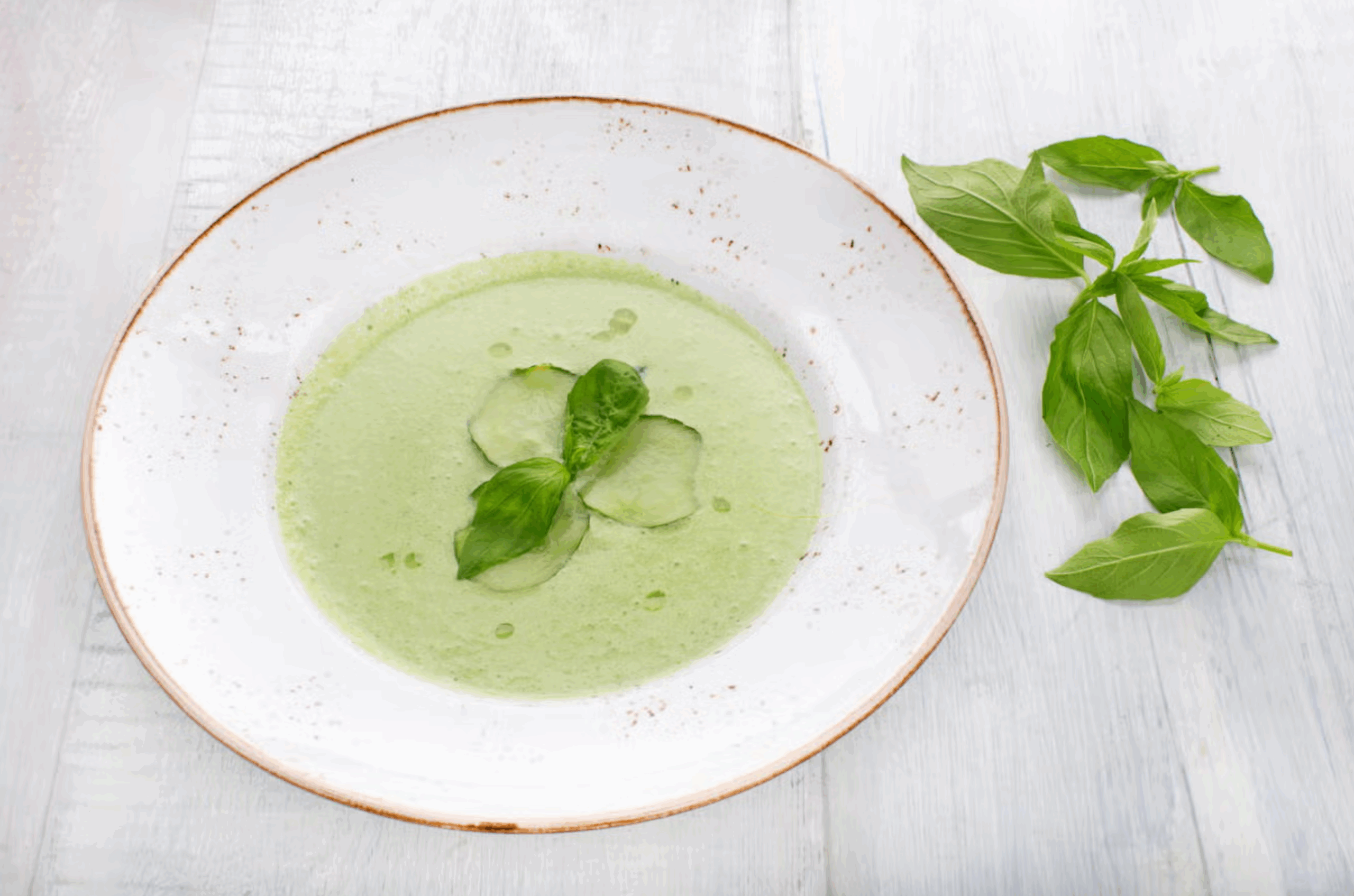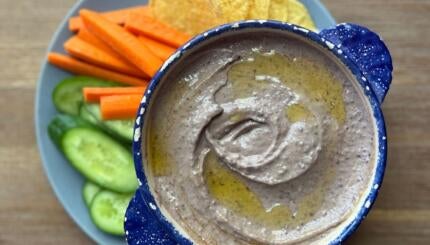I am a Jewish cook, and I make chicken soup. Over the years, I have prepared rivers of it and while it was always good, I was in search of great. I wanted deep flavor and golden color. A taste that relied not on salt or additives but on the elements of the soup itself — chicken, root vegetables, herbs, and spices. Perfection was elusive but I am happy to report that I finally found it in a recipe from Adeena Sussman’s cookbook, Sababa. Her overnight Yemenite chicken soup, made with hawaij, has become my obsession.
In the U.S., hawaij is the new darling of the foodie cognoscenti, but it’s been around the Middle East for hundreds of years. Savory hawaij, widely known as “hawaij for soup,” is similar in flavor profile to Indian garam masala and can be used as a dry rub for grilling as well as a flavoring for stews and soups. Immigrants from Yemen brought this mixture of cumin, black pepper, cardamom, coriander, and turmeric with them when they came to Israel, and today it is widely used in Israel by cooks of all backgrounds. Sussman calls it “a flavor lightbulb.” You can easily source it on Amazon — I like Pereg and New York Shuk’s blends.
There is also a sweet hawaij blend with ginger, cardamom, cinnamon, and clove — kind of like a chai mix — that is traditionally used to flavor coffee. It’s delicious, but wouldn’t work well in this soup!
The secret of Sussman’s soup is not in the hawaij alone. Open up 10 cookbooks and you will find 10 recipes for the best way to prepare this universally loved dish. Almost every recipe I have read, however, has you cook the soup for a total of 1 ½-4 hours, tops. In Sussman’s soup, which she learned to make from her mother — minus the hawaij — the two-hour mark is just the start of her chicken soup journey.
The Nosher celebrates the traditions and recipes that have brought Jews together for centuries. Donate today to keep The Nosher's stories and recipes accessible to all.
She cooks her soup low and slow for a total of 12 hours. Yes, 12. After 10 hours, she adds peeled fresh ginger and a couple of tablespoons of hawaij, which add heat, spice, and color to the gently cooked soup. If golden soup is what you’re after, the combination of slow cooking and turmeric will give you a deep amber broth.
How did Sussman think to add hawaij to her mother’s Ashkenazi chicken soup?
“Adding the Yemenite option is a reflection of my life,” said Sussman. “I live two minutes from all of these Yemenite soup joints and I eat that soup often. I love what the hawaij adds to the soup. I love that it adds spicy structure to the broth, and it enhances it as opposed to covering it up. Adding hawaij gives the soup life and adds some sunshine. It’s a comfort food that also gives you a jolt. It makes you sit up and pay attention.”
The first time I made Sussman’s overnight chicken soup — think cholent in soup form — I felt like I had struck… gold. The house smelled like home, the soup was the color I was after, and everyone who tasted it stopped after a spoonful and commented. It’s hard to forget, but easy to make. All you need is time. And water. And chicken. Some vegetables. And hawaij.
Make sure to check out Adeena’s recipe for overnight Yemenite chicken soup. If you’re vegetarian, this Yemenite soup with root vegetables will hit the spot!




